Sustainability
- Home
- Sustainability
BUSINESS SUSTAINABILITY
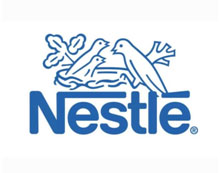
_____________
BUSINESS SUSTAINABILITY BASED OPERATIONAL EXCELLENCE
_________________
OPERATIONAL EXCELLENCE IN
FOOD INDUSTRY AND OTHER
_____________
Food Industry
→
Mining Industry
→
Life Sciences Industry
→
_____________
Food Industry
The Smart and Sustainable Operations in Food Industry

Mining Industry
Building a Sustainable and Successful Global Mining Industry

Life Sciences Industry
Financial Sustainability and Resiliency for Life Sciences Industry
_____________
OPERATIONAL EXCELLENCE OF FOOD
INDUSTRY
The Smart and Sustainable Operations in Food Industry

Hershey has a delicious, unique taste because of the farm fresh milk that is used. HERSHEY’S Milk Chocolate is one of the only milk chocolate brands in the world that still uses fresh milk in its production, giving it a distinctive taste.
Operational efficiency is the art of doing things in the smartest and most effective way. It’s like finding the shortest route on a map, ensuring you use the least energy and time to reach your destination.
This means optimising processes to streamline operations and utilising resources wisely in the business world.
Imagine a world where everything runs like clockwork. That’s the essence of operational efficiency. It’s about making each cog in the business machine work seamlessly together.
Operational efficiency means getting the maximum output from the minimum input. It’s about squeezing every drop of potential from your resources. This can mean using technology to automate tasks, streamlining workflows, or even reimagining how you allocate your time and energy.
Enhanced Product Quality

Nestle is known for its wide range of products, iconic brands and its commitment to quality, safety and sustainability. On quality food products a company should:
Create Understanding of Quality Cost
After a defect reaches a consumer, the cost is dramatically higher than fixing it at the source of the problem. After all, studies have shown that dissatisfied customers tell 9-15 people about their negative experience, and they’ll often leave negative reviews online or complain on social media, alerting hundreds or thousands more and damaging your reputation, which can sometimes be irreparable. Therefore, it is critical for all staff in the manufacturing environment to be trained to understand that the cost of poor quality multiplies exponentially if it enters the field. Once staff understands this perspective, the desire to improve product quality in food manufacturing will spread everywhere.
Implement Automated Statistical Process Control Systems
Developed in the early 1920s as a way to record data to alert manufacturers to deviations in process performance, Statistical Process Control (SPC) continues to deliver value to food manufacturers by reducing defects and waste. Whereas the data in SPC charts once had to be recorded manually, introducing the possibility of human error, today we have automated SPC systems. Quality SPC software helps teams identify and correct non-conformances using real-time data by monitoring operations to ensure outcomes fall within predetermined limits. When an issue arises, alerts notify the appropriate individuals so they can tend to the problem quickly to deliver consistent, quality output. SPC systems also drive continuous improvement by monitoring key performance indicators (KPIs) to discover trends that could be addressed, leading to increased productivity and quality.
Maintain a High Level of Supply Chain Visibility
Throughout the supply chain, the majority of partners and employees are limited to their own scope of work, working within a silo. However, in an ideal supply chain, everyone involved would be able to view the product’s journey, from the production source to arrival at its destination. This type of visibility can improve lead times and performance, and identify shortages and quality issues. It can also alert manufacturers to bottlenecks in the supply chain, enabling them to solve for the problem or find a new partner. There is a variety of supply chain software available that can improve visibility, and ultimately, your bottom line.
Develop a Food Safety Program
The Food Marketing Institute (FMI) and Grocery Manufacturers Association (GMA) estimate that the average cost of a recall for food companies is $10 million in direct costs, plus brand damage and lost sales. Even worse, the World Health Organization reveals that approximately 600 million people become ill each year after eating contaminated food, and 420,000 die. So, it is imperative that food manufacturers develop a food safety program. No longer a “nice to have,” today, domestic and foreign food manufacturers are required to register with section 415 of the Food, Drug, & Cosmetic Act and must comply with the requirements for risk-based preventive controls mandated by the FDA Food Safety Modernization Act (FSMA) as well as the modernized Current Good Manufacturing Practices (CGMPs) of this rule (unless an exemption applies). The aim is to prevent food contamination, train employees on proper food safety requirements, and develop an auditing system that ensures food safety practices are performed and enforced. One of the most popular food management systems manufacturers may choose to follow is the FDA-endorsed Hazard Analysis and Critical Control Points (HACCP).
Follow Sustainable practices
Sustainable practices also benefit your bottom line. By marketing your sustainable practices, consumers will reward you; studies show that people are 54% more likely to buy a product from a sustainable company, and about 20% of Americans will actually boycott a product that is not sustainable.
Use Accurate Labelling
While the FDA is responsible for assuring that food sold in the United States is properly labelled, more than half of all Americans feel that food labels are sometimes misleading, and more than 80% feel they’ve been tricked by nutrition labels. Consumers are catching on to dubious claims of “natural,” “organic,” and “GMO-free,” and with Mintel’s 2018 Global Food & Drink Trends report revealing that today’s consumer wants “complete and total transparency from food and drink companies,”. It’s important to accurately label ingredients and raw materials.
CREATE UNDERSTANDING OF QUALITY COST | IMPLEMENT AUTOMATED STATISTICAL CONTROL PROCESS |
MAINTAIN HIGH LEVEL OF SUPPLY CHAIN VISIBILITY | DEVELOP FOOD SAFETY PROGRAM |
USE SUSTAINABLE FOOD PRACTICES | USE ACCURATE LABELLING |
Consistency
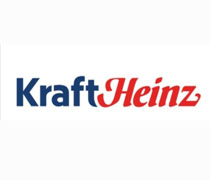
Heinz sells more than 5,700 products in 200 countries. While ketchup, mustard, and mayo remain standards in the U.S., things like Heinz Baked Beans are wildly popular in the UK.
What is Food Consistency? Consistency is a requirement in any industry that involves food and beverages. Maintaining food consistency means ensuring that every dish or product has the same taste, look, aroma, and texture. Every customer should get the same experience when they enjoy the food and drink. One of the easiest ways to ensure consistent food quality across multiple locations is to use standardised recipes and equipment. Standardised recipes are recipes that have been tested and verified to produce the same results every time, using the same ingredients, measurements, methods, and cooking times.
Customer Satisfaction
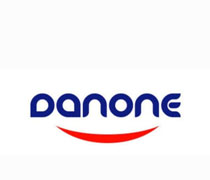
Danone S.A. is a French multinational food-products corporation based in Paris. It was founded in 1919 in Barcelona, Spain. It is listed on Euronext Paris where it is a component of the CAC 40 stock market index. Some of the company’s products are branded Dannon in the United States.
Ultimately, the measure of accomplishment in the food industry lies in customer contentment. Operational efficiency directly influences how your customers perceive your offerings. When quality is high, and uniformity is unwavering, customers return for the taste and the experience. It’s like turning first-time food taste into loyal patrons through the magic of operational excellence.
Operational efficiency isn’t just a backstage helper; it’s a spotlight on your product’s quality and the reliability of the experience you provide. Through product standardisation, quality assurance, and customer satisfaction, operational efficiency ensures that every bite – or every interaction – is a testament to your commitment to excellence.
Process-optimization
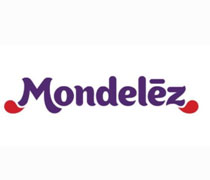
Mondelez, one of the world’s largest snacks companies, tapping emerging technologies such as artificial intelligence (AI), data analytics and robotics has enabled it to improve product recommendations, increase sales, facilitate business planning and even monitor the health of cocoa trees. The company’s sales teams now use a sales automation platform to recommend products that a retailer could offer on its shelves based on historical sales data, including what sells more in a particular neighbourhood.
Picture your business as a well-oiled machine humming with precision. Process optimization is the toolkit that fine-tunes every cog and gear to run at its best.
Mondelez Identifying Bottlenecks: Mondelez think bottlenecks as traffic jams in business’s highway. They slow everything down and hinder progress. Operational efficiency means pinpointing these bottlenecks – whether it’s a slow manual process or a lack of resources – and finding ways to clear the road. It’s like removing roadblocks to ensure a smooth journey.
Mondelez Eliminating Redundancies: Imagine if you had three chefs doing the same task in your kitchen. That’s redundancy – and it’s inefficient. Process optimization involves identifying these duplicate efforts and consolidating tasks. Having one chef handle the task frees up resources for other crucial activities, enhancing overall efficiency.
Mondelez Reduce Waste: Waste is the arch-nemesis of efficiency. Think of it as the extra ingredients left on the cutting board after preparing a dish. Operational efficiency strives to minimise waste – whether it’s time, materials, or effort. By trimming excess and focusing on what truly matters, you’re saving resources and bolstering your bottom line.
Implementing Best Practices
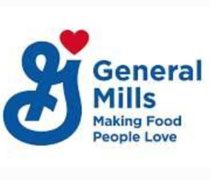
Process optimization
→
Technology Integration
→
Software Implementation
→
Automation
→
General Mills is increasing its use of automation to further optimise its ⁶warehouse and logistics network.
So far, General Mills has installed warehouse automation features in four locations with several other projects in the works.
Process optimization isn’t about
reinventing the wheel; it’s about making sure that your business wheels turn smoother and faster. By identifying bottlenecks, eliminating redundancies, and embracing best practices, you’re creating a recipe for success. So, as we continue our journey, keep in mind that process optimization is your compass to achieving operational efficiency and ensuring your business reaches its full potential.
Technology Integration
In the modern business landscape, operational efficiency finds a powerful ally in technology. Let’s delve into how technology integration shapes the path to success.
Imagine technology as a sous chef in your kitchen, working alongside you to create culinary masterpieces.
Adopting Modern Tools: Just as a chef relies on top-notch knives and gadgets, businesses can use modern tools. Technology offers a toolbox filled with digital solutions designed to streamline tasks. It’s like having precision instruments that ensure every cut is flawless.
Software Implementation: Think of software as your recipe book – a centralized resource that guides your operations. Operational efficiency involves implementing software that automates manual processes. It’s like having a recipe magically execute itself, leaving you with more time to focus on creativity and quality.
Automation: Imagine a kitchen where ingredients move on their own, guided by invisible hands. Automation is the technological wizardry that brings this magic to life in business. By automating repetitive tasks, you reduce errors and free up valuable time. It’s like having a kitchen helper that never tires.
Technology empowers businesses with data-driven insights. With technology integration, decision-making becomes more informed and accurate.
NESTLE | THE HERSHEY |
MONDELEZ | DANONE |
THE KRAFT HEINZ | GENERAL MILLS |
_____________________________
OPERATIONAL
EXCELLENCE OF MINING INDUSTRY
Building a Sustainable and Successful Global Mining Industry
The mining industry did not experience continuous development, and productivity remained stagnant. This is where operational excellence is needed to close the gap in productivity. Based on a continuous improvement mindset, operational excellence is a framework for striving for a consistent and efficient execution of business strategy, encompassing all aspects of production, safety and cost optimization to maximize productivity and profitability.
Mining Context
In a mining context, productivity is more about efficiency of resources—such as labor, equipment, energy and time—to extract and process minerals. A productive mining operation minimizes waste, maximizes output and makes optimal use of known resources in the ground, all within a set budget, even amidst volatile market conditions.
Productivity is a competitive advantage for other industries, but from my experience, the mining industry is not paying attention. At least, not enough! With the challenges around social license to operate, ESG objectives and reputational risks of the mining industry, productivity is often only considered as an afterthought. The McKinsey study concluded that despite the short-term improvements in productivity and efficiency that mining companies can achieve, they continue to deal with the challenge of sustaining gains or keeping up with the pace of ongoing advancements.
It is for these reasons that I believe leaders in this industry must take steps to move beyond merely being productive and instead focus on pursuing true operational excellence.
People Efficiency and Synergy

BARRICK GOLD
Barrick is a sector-leading gold and copper producer. The portfolio spans the world’s most prolific gold and copper districts and is focused on high-margin, long-life assets.
This pillar focuses on developing effective leaders, managing performance, redesigning organisations for efficiency and providing training and coaching to optimise the capabilities and well-being of the workforce, ultimately driving operational excellence through human capital.
Processes Performance
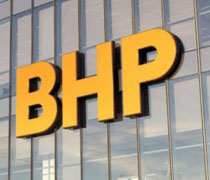
In South Australia BHP mine copper, and produce gold, silver and uranium. The South Australian operations consist of three primary mine assets, containing some of the world’s most significant deposits of copper, gold and uranium.
BHP process performance emphasizes the continuous improvement and optimization of operational processes, employing methodologies such as Lean, Six Sigma and engineering principles to enhance efficiency, eliminate waste and streamline workflows, resulting in improved productivity and quality.
Process mining provides a holistic, big-picture view of transactions and processes, automates analysis and can flag violations in real-time as they occur.
Assets Optimization

Rio Tinto Group is a British-Australian multinational company that is the world’s second-largest metals and mining corporation. It was founded in 1873 when a group of investors purchased a mine complex on the Rio Tinto, in Huelva, Spain, from the Spanish government.
Rio Tinto Assets Optimization centres around maximising the value and performance of physical assets through systematic optimization, asset management, reliable maintenance practices and efficient parts and warehouse management, ensuring optimal utilisation and longevity of equipment and infrastructure.
Cash Performance
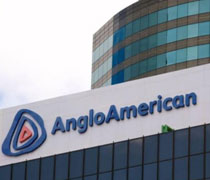
Anglo American Plc is a diversified mining company. The company explores, plans, builds, mines, processes, transports and markets bulk commodities, base metals, precious metals and minerals
Anglo American cash pillar aims at creating value by strategically transforming the business. It focuses on marketing and sales initiatives and on leveraging the full potential of the organisation to enhance profitability, generate sustainable revenue streams and effectively manage financial resources.
Value Objectives

Glencore is one of the world’s largest global diversified natural resource companies and a major producer and marketer of more than 60 commodities that advance everyday life.
Glencore maintains focus on value-added activities. It is the leader’s responsibility to prioritise goals and eliminate distractions from the objective of the program.
Communication Clarity
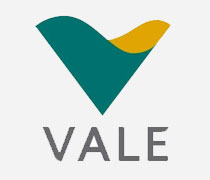
Communicate clearly and frequently to all levels—this is key to change management. By ensuring that information is transparently and consistently shared, leaders can keep employees informed, address concerns and maintain alignment throughout the change process.
Vale is a global mining company with headquarters in Brazil and operations in more than 30 countries, present on all five continents. Vale is a leader in the production of iron ore and the second largest producer of nickel. Vale’s mission is to transform natural resources into prosperity and sustainable development.
Leveraging the penetrating insights derived from process mining, organisations can further optimise complex, mission critical processes such as the customer journey, cross-company supply chain and complex manufacturing operations.
→
RIO TINTO | GLENCORE |
BHP | VALE |
ANGLO AMERICAN | BARRICK GOLD |
_____________________________
OPERATIONAL EXCELLENCE OF LIFE SCIENCES INDUSTRY
Financial Sustainability and Resiliency for Life Sciences Industry
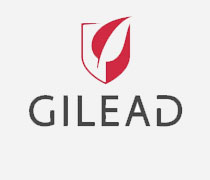
Let’s start with Gilead. Gilead is responsible for creating a supportive environment that adds value to biotech businesses through shared facilities and business support. Life sciences executives focus on cost containment and agility in the face of economic and legislative challenges. Life sciences leaders who act now to build financial resiliency will be better prepared to handle economic and market disruptions. Success requires understanding what drives commercial excellence, including therapeutics, operational inefficiencies and digital technologies. Many life sciences executives find themselves in uncharted territory with no prior playbook to guide them forward.
Key elements of financial resiliency
Rather than focus on near-term cost takeout initiatives, life sciences leaders can lean on the financial resiliency levers below to increase short-term performance and fund strategic investments, such as digital- and data-driven technologies, that drive operational excellence and deliver sustained improvements.
Focus on revenue reliability
→
Build healthy cost structures
→
Streamline operating models
→
Increase capital efficiency
→
Take a people-centric approach to workforce and culture
→
Focus on revenue reliability
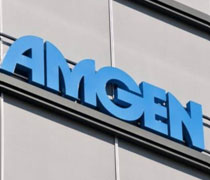
Amgen is committed to unlocking the potential of biology for patients suffering from serious illnesses by discovering, developing, manufacturing and delivering innovative human therapeutics. This approach begins by using tools like advanced human genetics to unravel the complexities of disease and understand the fundamentals of human biology.
To help ensure revenue growth and predictability, life sciences companies need to focus on sales force effectiveness, optimising research and development (R&D) efficiency, encouraging innovation and aligning marketing strategies with consistent pricing. These strategies have the potential to unlock growth in key areas, enhance sales and operations, and improve revenue generation.
To achieve these goals, life sciences companies need to equip their sales teams with the right tools, training and strategies to effectively promote their products to health care professionals. Streamlining R&D processes and advancing innovation preservation efforts can also enhance revenue predictability.
Pricing pressures, regulatory changes and market dynamics can all make pricing less predictable. To help ensure revenue predictability, life sciences companies can adopt several strategies. First, they need to establish robust market research and analysis capabilities to gain insights into market trends, competitive landscapes and customer needs. This information helps companies develop pricing strategies, launch targeted marketing campaigns and make informed decisions about resource allocation. Second, leveraging advanced data analytics and AI helps companies identify patterns, forecast demand, and optimize sales and marketing efforts. Third, focusing on high-growth therapeutic areas will help promote growth.
Build healthy cost structures

AstraZeneca product portfolio includes biologics, prescription pharmaceuticals and vaccines. AstraZeneca s8ells its products through wholly- owned local marketing companies, distributors and local representative offices. The company markets its products to primary care and specialty care physicians.
Enhancing the cost structure is crucial step for building financial resiliency. The increased cost of capital and continuous pressures on selling, general and administrative (SG&A) expenses means that life sciences companies must focus on improving cost position. Companies have the potential to achieve this with investments in automation and AI to streamline operations and enhance decision-making.
Supply chain and logistics challenges and subsequent costs can be addressed through operational excellence, nearshoring while leveraging government incentives and by exploring strategic sourcing. Leveraging product rationalization and plant network optimization can further enhance cost-efficiency.
In addition to the major considerations in the cost structure of life sciences companies, such as buy vs. make decisions and procurement, there are also often-overlooked opportunities for continuous improvement and smaller-scale changes that can increase capacity without significant capital expenditures.
Streamline operating models
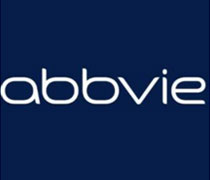
AbbVie is a research-based biopharmaceutical company. It started as a spinoff of the long-established health care corporation Abbott Laboratories. AbbVie was an immediate success, netting $18.8 billion in sales in its first year. This was largely due to the strength of its blockbuster drug Humira.
Life sciences companies can periodically review their operating models to ensure that they are appropriate for current conditions. An effective operating model provides a framework for streamlined processes, cost optimization and agility, allowing companies to quickly adapt to market changes and disruptions. Adopting an asset-light strategy, leveraging shared services, redesigning the workforce for agility and embracing digital operations are crucial to improving manufacturing capabilities, thus increasing margins and return on invested capital.
Increase capital efficiency
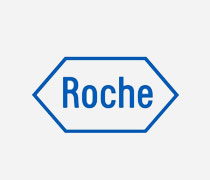
Roche is the world’s largest biotech company, with truly differentiated medicines in oncology, immunology, infectious diseases, ophthalmology and diseases of the central nervous system. Roche is also the world leader in in vitro diagnostics and tissue-based cancer diagnostics, and a frontrunner in diabetes management.
Capital efficiency is of utmost importance as life sciences companies need far greater cash reserves than companies in other sectors. These reserves fund up-front investments in long-range R&D projects, regulatory compliance and manufacturing capabilities.
Companies can enhance capital efficiency by adopting strong cash management principles, conducting capital expenditure planning and instituting prudent debt management practices.
People-centric Approach to Workforce and Culture

Bristol Myers Squibb is a global biopharmaceutical company whose mission is to discover, develop and deliver innovative medicines that help patients prevail over serious diseases.
The workforce plays a crucial role in building overall financial resiliency for organizations. To address workforce-related challenges and ensure a successful transformation, life sciences companies can leverage three primary levers:
Taking a data-driven, analytical approach to workforce issues: Instead of setting arbitrary workforce reduction goals and resorting to widespread layoffs, successful organizations analyze the influence and impact of individual employees as an input into workforce decisions. This approach helps identify which employees should be retained, taking into account their unique contributions and strength of their network, regardless of their level within the organization.
Rethinking rewards programs: Companies often overlook the true value that employees place on various benefits. By understanding the cost-benefit ratio and aligning benefits with employee preferences, organizations can optimize their rewards programs. This approach attracts and retains employees while reducing unnecessary spending on less valued benefits.
Re-evaluating work processes, locations and roles: A thorough review of end-to-end processes allows companies to reimagine work in light of digital disruption. This can allow organizations to identify the most efficient locations for specific tasks and determine how technology, such as AI, can support workers. The future workforce will see a shift toward offloading labor-intensive tasks to technology, elevating employees to more strategic roles. This transformation will require developing new skills and expertise and offer employees exciting opportunities for professional growth.
We can help identify opportunities that lead to an increase in value and the ability to quickly respond to stressors and macro-economic events. We provide a prioritized program of focused projects to improve cash, cost, service and risk in rapid time frames.
AMGEN | GILEAD SCIENCES |
ASTRAZENECA | ROCHE |
ABBVIE | BRISTOL MYERS SQUIBB |
_____________________________
Our consulting on business sustainability is managed by a dedicated team from Switzerland.
________________

_____________
Switzerland has a highly developed economy that is largely based on its strong financial sector. The country is home to several of the world’s largest banks, including UBS and Credit Suisse, as well as numerous insurance companies and wealth management firms.
The majority of Swiss workers are employed in the service sector, mostly in business and finance and tourism. Chemical and pharmaceutical production and mechanical engineering/metals are the main branches of the industrial sector. The importance of agriculture for the economy is in decline.
Switzerland has a highly developed manufacturing industry specializing in high-tech and knowledge-based production. Other important industries include food and beverage, machinery, chemicals, textiles, precision instruments and pharmaceuticals, along with the legendary Swiss watch.
Main industries of Switzerland are machinery, chemicals, watches, textiles, precision instruments, tourism, banking, insurance, and pharmaceuticals.
Switzerland’s major exports are machinery and equipment, chemical-pharmaceutical products, watches, and textiles and apparel.
MCGR Swiss team has experience on business sustainability in Paper and Packaging Industry, machinery, chemicals, watches, textiles, precision instruments, tourism, banking, insurance, and pharmaceuticals. |

PACKAGING AND PAPER INDUSTRY |
TOURISM INDUSTRY |
PRECISION INSTRUMENTS INDUSTRY |
BANKING INDUSTRY |
INSURANCE INDUSTRY |
PHARMACEUTICALS INDUSTRY |
TEXTILE AND APPAREL INDUSTRY |
_____________________________